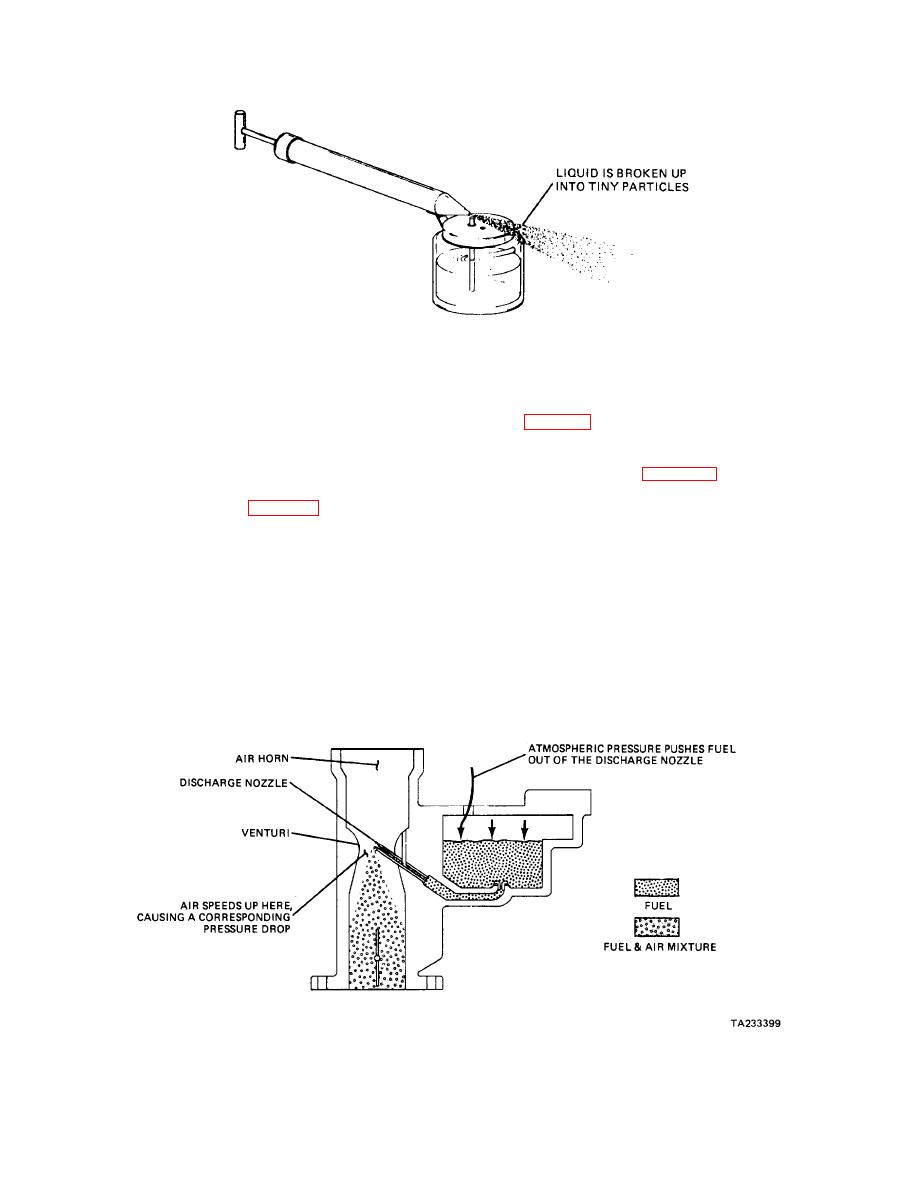
| Tweet |

Custom Search
|
|

|
||
 TM 9-8000
Figure 4-21. Example of Atomization
The increased speed of the airflow also will result In a
atomized as it enters the venturi. To ensure proper fuel
corresponding decrease in pressure within the venturi
flow, a secondary venturi or a venturi booster may be
and at the end of the discharge nozzle. When this
used (fig. 4-23). It will decrease further the pressure at
occurs, atmospheric pressure will push gasoline through
the discharge nozzle.
the discharge nozzle and Into the carburetor throat,
where it will mix with the intake airflow.
4-12. Air-Fuel Ratio (Fig. 4-24). The proportions of
an air-fuel mixture are expressed in terms of the air-fuel
ratio. It is the relationship by weight of the mixture. An
for the fuel to be in when it reaches the cylinder is to be
example of how this is expressed would be:
vaporized completely. Good Intake manifold design will
help to vaporize the fuel, but the carburetor must properly
Air-Fuel Ratio = 12:1.
atomize the fuel beforehand. Atomization of the fuel
occurs as it Is drawn into the venturi. As the fuel comes
In this air-fuel mixture, the air would be 12 times as
out of the discharge nozzle, it is broken into tiny droplets
heavy as the fuel. The operational range of air- fuel
as it enters the airflow. To ensure that there is a high
ratios in an average gasoline engine are from
degree of atomization, a tiny hole called an air bleed is
approximately 9:1 to approximately 17:1. Air- fuel ratios
used to allow air to mix with the fuel in the discharge
on the lower end (less air) are considered to be rich
tube.
The
fuel
is
then
further
mixtures while the air-fuel ratios at the higher end (more
air)
are
considered
Figure 4-22 Venturi Effect
4-14
|
||
 |
||